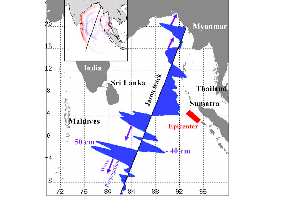Crescent City’s claim to fame is it the only town in the continental US where a tsunami has killed residents. On March 28, 1964, a 21-foot tsunami wave created by a earthquake in nearby Alaska surged into the town of 7,500 doing extensive damage and killing 11 people. Underwater topography can tunnel these massive waves to direct them towards a certain point, which increases the power by centralizing their force. Such was the case with the wave that hit Crescent City; the underwater topography leading to Crescent City created a funnel for the wave in 1964.
With such a powerful wave, it is a blessing that more people were not killed. Early sirens warned of the wave and many residents retreated to higher ground. UGGS put out a report in 2005 of how to survive a tsunami taking much information from the survivors of Tsunamis in Chile, Hawaii and Japan. From their extensive research, the following points were given:
• Many will survive the earthquake that will later trigger a tsunami
• Look for natural warnings; An earthquake or rise and fall of coastal waters may serve as an early warning as well as wildlife heading for higher ground
• Listen for official warnings; Take sirens and evacuation notices seriously
• There is usually not just one wave; Generally small waves are then followed by higher intensity waves
• Head for higher ground and stay put; It may take several hours for the Tsunami force wave to hit
• Abandon belongings; Many people died concerning themselves with belonging rather than heading to higher ground
• Roads may not be an escape route; They might be made impassable by earthquakes or earlier waves
• If getting to higher ground is not an option:
Go to an upper floor or roof of a building; Climb a tree; If you are near wave, find something that can act as a raft
37.7699 -122.467174
 Courtesy of NASA
Courtesy of NASA